IEEE Pervasive Computing
About
- This is a curated and experimental site, offering historical and visual index of all collected sources.
- The site does not host any of the files. It only provides an index and links to full text files.
- Full text of many sources is behind a paywall. You may need to obtain a subscription to read full text.
Latest Issue
2024
| 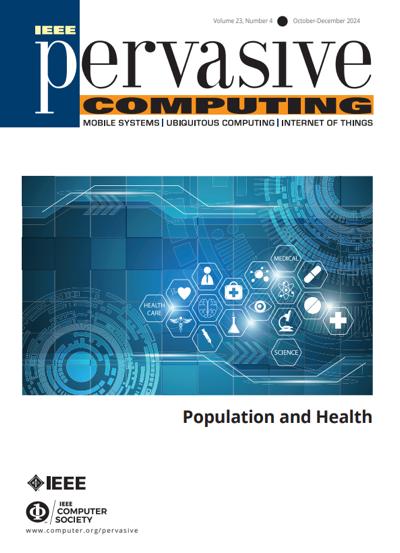 | Latest Issue:
|
History
| · | ||
2023
| 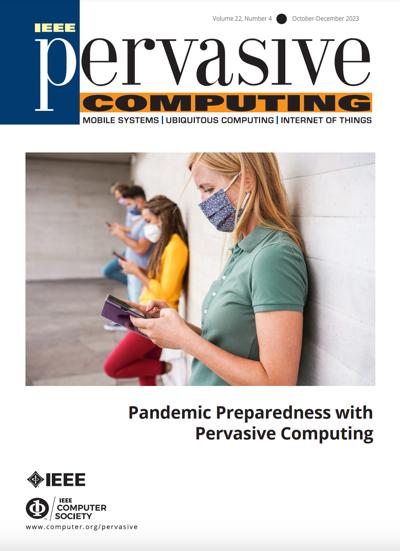 | A Year Ago:
|
| · · · · | ||
2019
| 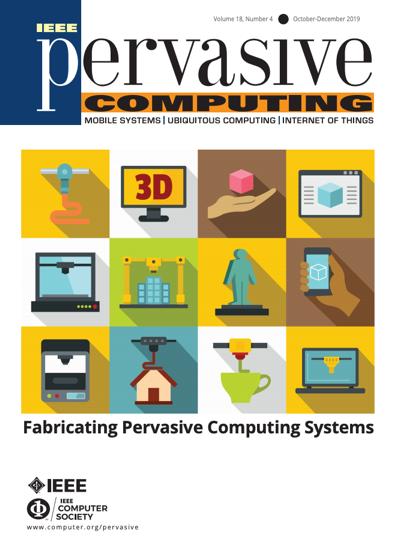 | 5 Years Ago:
|
| · · · · · | ||
2014
| 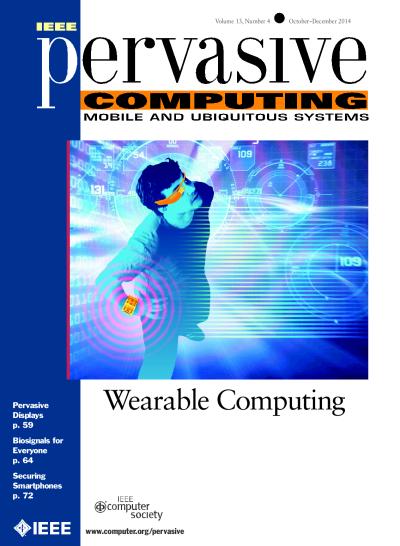 | 10 Years Ago:
|
| · · · · · | ||
2009
| 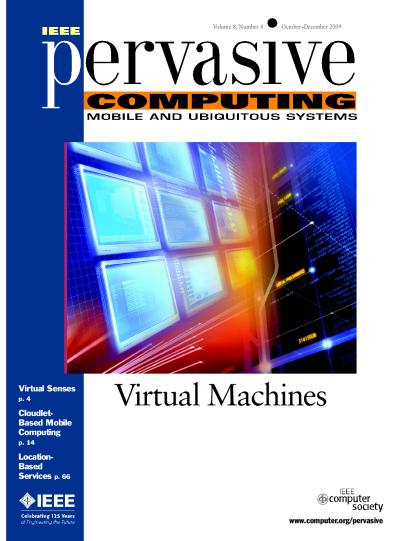 | 15 Years Ago:
|
| · · · · · | ||
2004
| 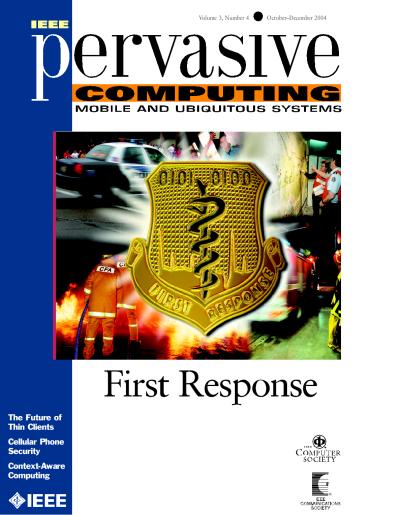 | 20 Years Ago:
|
| · · · | ||
2002
| 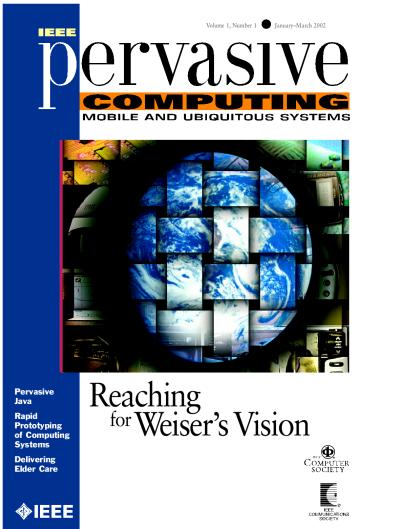 | Premiere Issue:
|
History of Ideas
The landscape of pervasive computing has undergone a remarkable transformation over the past two decades, evolving from foundational concepts of smart environments to a deeply integrated, AI-driven reality addressing complex societal challenges. This report traces key developments, recurring themes, and notable shifts across different periods, as reflected in a diverse collection of article titles.
Early Foundations: 2002-2005
The early 2000s marked the foundational period for pervasive computing, with a strong emphasis on establishing the core technologies and exploring initial application areas. The vision was largely centered on making computing disappear into the environment.
Key Themes:
- Wearable Computing's Dawn: This era saw a significant focus on wearable devices, exploring their form factors, interfaces, and applications. Titles like "Wearable Computing: Is It Just Hype?" (2002), "The Evolution of Army Wearable Computers" (2002), and "Wearable Computing from Jewels to Joules" (2014) illustrate the journey from nascent ideas to considerations of power and practicality.
- Smart Environments and Context-Awareness: A defining theme was the creation of "smart spaces" and systems that could adapt to user context. Examples include "A Middleware Infrastructure for Active Spaces" (2002), "Labscape: A Smart Environment for the Cell Biology Laboratory" (2002), and "Semantic Space: An Infrastructure for Smart Spaces" (2004). The concept of "context-aware computing" was central ("Guest Editors' Introduction: Context-Aware Computing," 2002).
- Emergence of Pervasive Healthcare: Early applications of pervasive technology in healthcare, particularly for elder care, began to appear. Titles such as "Using Pervasive Computing to Deliver Elder Care" (2002), "Technology for Care Networks of Elders" (2004), and "A Smart Sensor to Detect the Falls of the Elderly" (2004) highlight this early focus.
- Prototyping and System Development: A significant portion of the research involved developing methodologies and tools for building pervasive systems. "Rapid Prototyping of Computing Systems" (2002) and "Rapid Prototyping for Ubiquitous Computing" (2005) signify the importance of iterative design.
- Security and Privacy Concerns Surface: As early systems started to gather personal data, fundamental questions about security and privacy arose. "Modeling Privacy Control in Context-Aware Systems" (2002), "A Framework for Comparing Perspectives on Privacy and Pervasive Technologies" (2003), and "Location Privacy in Pervasive Computing" (2003) show these concerns were present from the outset.
Shifts and Continuities: The period began with an optimistic exploration of what pervasive computing could be. By 2005, there was a clear shift towards considering smartphones as the primary platform for pervasive computing, as seen in "The Smart Phone--A First Platform for Pervasive Computing" (2005). This marked a move from custom-built smart environments to leveraging widely available personal devices. Privacy and energy conservation ("Energy Harvesting and Conservation," 2005) emerged as persistent challenges that would continue to define the field.
Expanding Horizons: 2006-2009
This period saw pervasive computing move beyond initial prototypes, engaging with broader societal applications and addressing new challenges such as pervasive security and sustainability.
Key Themes:
- Intelligent Transportation Systems (ITS): A dedicated focus on smart cars and roads emerged, with titles like "Intelligent Transportation Systems" (2006) and "The Last Inch at 70 Miles Per Hour" (2006). This highlighted the potential for pervasive sensing to enhance safety and efficiency in mobility.
- RFID's Pervasive Reach: Radio-frequency identification (RFID) became a prominent technology, finding applications in diverse sectors from manufacturing to retail. "RFID-Based Facility Maintenance at Frankfurt Airport" (2006) and "LotTrack: RFID-Based Process Control in the Semiconductor Industry" (2006) showcased its industrial utility, while "An Introduction to RFID Technology" (2006) underscored its growing importance.
- Urban Computing and Sensor Networks: The city itself became a canvas for pervasive technology. "Urban Computing and Mobile Devices" (2007) and "The Urbanet Revolution: Sensor Power to the People!" (2007) illustrate the drive to sense and understand urban environments.
- Healthcare Expansion: Pervasive healthcare continued to grow, with initiatives like "Continua: An Interoperable Personal Healthcare Ecosystem" (2007) and applications for assisted living ("Pervasive Computing Support for Hospitals," 2007).
- "Hacking" and User Innovation: A unique theme emerged around user innovation and "hacking" existing technologies. Titles like "Hacking Is Pervasive" (2008) and "Hacking the Nintendo Wii Remote" (2008) celebrated the DIY spirit and opportunistic design.
- Environmental Sustainability: Towards the end of this period, environmental concerns gained traction. "Environmental Sustainability" (2009) and "Using Sensor Information to Reduce the Carbon Footprint of Perishable Goods" (2009) indicated a growing awareness of technology's role in addressing ecological issues.
- Cloudlets and Early Edge Computing: The concept of "cloudlets" ("The Case for VM-Based Cloudlets in Mobile Computing," 2009) emerged as an early precursor to what would become known as edge computing, aiming to bring cloud-like resources closer to mobile devices.
Shifts and Continuities: The initial optimism about "disappearing" technology began to mature into a more pragmatic approach, acknowledging both its potential and the challenges of real-world deployment ("Real-World Challenges of Pervasive Computing," 2006). Security and privacy remained critical, with new threats like RFID attacks ("An RFID Attacker Behavior Taxonomy," 2009) becoming apparent. The focus shifted from individual smart objects to interconnected systems and larger societal impact, exemplified by the rise of urban computing and environmental applications.
Ubiquitous Integration: 2010-2014
This era marked a significant integration of pervasive computing into everyday life, largely driven by the widespread adoption of smartphones and the burgeoning concept of the Internet of Things (IoT).
Key Themes:
- Smartphone Dominance: Smartphones solidified their role as the central hub for pervasive applications. "iPhone: Smarter Than the Average Phone" (2010) and "Smartphones: Past, Present, and Future" (2014) reflect their centrality.
- Internet of Things (IoT) Takes Shape: The term "Internet of Things" became explicit, moving beyond just sensors and networks to connected objects and services. "Ubiquitous ID: Standards for Ubiquitous Computing and the Internet of Things" (2010) and "Connecting the Physical World with Pervasive Networks" (2012) capture this trend.
- Advanced Healthcare Applications: Healthcare remained a major application area, expanding into mental health ("A Decade of Ubiquitous Computing Research in Mental Health," 2010) and chronic disease management. "Personalized Pervasive Health" (2010) showcased a move towards tailored solutions.
- Behavior Change and Social Impact: Pervasive technology was increasingly seen as a tool for influencing human behavior, from promoting healthy eating ("It's Time to Eat! Using Mobile Games to Promote Healthy Eating," 2010) to encouraging sustainable practices ("Smartphones for Large-Scale Behavior Change Interventions," 2013).
- Wearables Go Mainstream: Wearables transcended niche applications to become consumer products. "How Wearables Worked their Way into the Mainstream" (2014) and "Wearable Computing from Jewels to Joules" (2014) highlight this transition, alongside research into power generation for these devices ("Human Motion: Sustainable Power for Wearable Electronics," 2014).
- DIY Fabrication and Personal Manufacturing: The ability to create one's own devices and components became a significant area of interest, from "Changing How We Make and Deliver Smart Devices: When Can I Print Out My New Phone?" (2011) to "Do-It-Yourself Fabrication of Electronic Devices" (2014).
- Privacy Debates Intensify: As data collection became more pervasive, privacy concerns moved from theoretical discussions to concrete debates about social media ("The Clash between Privacy and Automation in Social Media," 2014) and public data mining ("Mining Private Information from Public Data: The Transantiago Case," 2014).
Shifts and Continuities: This period saw a maturation of many early concepts, with the smartphone becoming the de facto personal pervasive device. The "Internet of Things" emerged as the overarching vision, integrating the earlier ideas of smart objects and sensor networks. The focus broadened from simply "sensing" to actively "influencing" user behavior and addressing social challenges. Energy efficiency remained a critical engineering problem, but the conversation around privacy became more urgent and nuanced, moving into societal and ethical implications.
Smart Ecosystems and New Frontiers: 2015-2019
The mid to late 2010s witnessed the expansion of pervasive computing into complex ecosystems, with AI playing an increasingly central role and new frontiers like drones and conversational agents gaining prominence.
Key Themes:
- AI Integration and Data Science: Artificial intelligence became deeply intertwined with pervasive systems, moving from background processing to direct interaction. "Cloud-Based AI for Pervasive Applications" (2016) and "Pervasive Data Science and AI" (2019) signify this shift.
- Drones and Robotics: Unmanned aerial vehicles (UAVs) and robots moved from military or industrial applications to pervasive consumer and service roles. "Drones, Robots, and Sushi!" (2016), "Drones Ripe for Pervasive Use" (2017), and "Robotic Symbionts: Interweaving Human and Machine Actions" (2018) showcase their diverse utility.
- Smart Cities and Infrastructure: The smart city concept gained momentum, leveraging IoT for urban management, mobility, and citizen engagement. "ISO-Standardized Smart City Platform Architecture and Dashboard" (2017) and "Beyond Data in the Smart City: Repurposing Existing Campus IoT" (2017) illustrate this focus.
- Accessibility and Human Augmentation: A strong emphasis emerged on using pervasive technology to enhance accessibility for individuals with disabilities and augment human capabilities. "Enhancing Accessibility and Engagement for Those with Disabilities" (2018), "Tactile Overlays by and for Blind People" (2018), and "Augmenting Humans" (2018) are prime examples.
- Conversational Agents and UI: Voice-based interfaces and conversational agents became a significant research area, aiming for more natural human-computer interaction. "Accelerating Conversational Agents Built With Off-the-Shelf Modularized Services" (2019) and "A Conversational Robot to Conduct Therapeutic Interventions for Dementia" (2019) highlight this.
- Maturing Smart Homes: Smart home technology continued to evolve, moving from novelty to more integrated and "inhabited" spaces. "Smart Homes: Implemented" (2019) suggests a level of maturity in deployment.
- Patient-Generated Data and Health Analytics: The potential of data collected by individuals for health monitoring and management became a key focus for "Harnessing the Power of Patient-Generated Data" (2018).
Shifts and Continuities: This period saw AI transform from an abstract concept to a practical component, enabling more intelligent and adaptive pervasive systems. The scope of "things" in the IoT expanded dramatically to include complex systems like drones and robots. Accessibility became a more prominent design consideration, emphasizing inclusive technology. The ongoing challenge of privacy evolved into a need for "personalized privacy assistants" (2018) as data collection became ubiquitous. The term "multiverse" (2019) even briefly appeared, hinting at future concepts beyond physical space.
Pandemic Shift & AI Acceleration: 2020-2024
The most recent period has been profoundly shaped by global events like the COVID-19 pandemic, which accelerated the adoption of pervasive technologies for health and remote work, and the explosive growth of advanced AI, particularly generative models.
Key Themes:
- COVID-19's Transformative Impact: The pandemic acted as a catalyst, pushing pervasive computing to the forefront for public health challenges. Titles like "Wearables to Fight COVID-19: From Symptom Tracking to Contact Tracing" (2020), "TELECOVID: Remote Vital Signs Monitoring of COVID-19 Risk Patients in Home Isolation With an In-Ear Wearable" (2021), and "Pandemic Preparedness With Pervasive Computing" (2023) show this direct influence.
- Mental Health and Wellbeing: Research into supporting mental health through pervasive tech intensified significantly, especially in the wake of increased social isolation. "A Decade of Ubiquitous Computing Research in Mental Health" (2020), "Mental State, Mood, and Emotion" (2022), and "Toward Building Computational Well-Being Ecosystems" (2024) highlight this growing priority.
- Generative AI's Emergence and Multimodal LLMs: The advent of large language models (LLMs) and generative AI marked a profound shift, offering new interaction paradigms. "Generative AI and the Call for Brevity" (2023) and "Multimodal Large Language Models in Human-Centered Health: Practical Insights" (2024) demonstrate the rapid integration of these powerful tools.
- The Metaverse and Digital Identity: The concept of the "metaverse" gained significant attention, bringing with it new challenges and opportunities for pervasive computing. "Privacy in the Metaverse" (2024), "Visual Privacy Control for Metaverse and the Beyond" (2024), and "The Pervasive Multiverse" (2024) indicate the exploration of immersive digital spaces.
- Sustainability and Energy Communities: Environmental sustainability transitioned from an emerging concern to a central design principle. "Pervasive Sustainability" (2024), "Low-Cost Sensing for Environmental Sustainability" (2024), and "Energy Communities: Pervasive Technologies and Collective Futures" (2024) underscore a commitment to green computing.
- Equitable Healthcare and Social Impact: Beyond general health, there's a strong emphasis on equitable access and societal benefit. "Justin Chan: Intelligent Mobile Systems for Equitable Healthcare" (2024) and "Bridging the Health Divide" (2024) point to addressing disparities.
- Edge AI and Computational Materials: The "edge" continues to be a critical location for AI processing, moving from conceptual to essential for consumer devices ("The Future of Consumer Edge-AI Computing," 2024). "Computational Materials" (2020, 2021, 2024) also represents an advanced frontier, where materials themselves become computational.
Shifts and Continuities: The most recent period demonstrates an accelerated adoption and deeper integration of pervasive technologies, largely driven by global crises and rapid AI advancements. The focus shifted from merely sensing and interacting to actively shaping wellbeing, fostering equitable access, and addressing grand challenges like climate change. Privacy and ethical considerations ("Teaching UbiComp With an Integrated Ethics and Societal Implications Twist," 2024) have become ingrained, moving beyond a technical challenge to a fundamental design and societal imperative. The metaverse represents the newest frontier, pushing the boundaries of what "pervasive" means, moving from physical ubiquity to digital immersion.
Conclusion
From its early days of exploring smart environments and wearables, pervasive computing has grown into an expansive field deeply interwoven with societal needs. We've witnessed a shift from device-centric research to human-centered applications, from localized sensing to global data ecosystems. The consistent threads throughout this journey include the relentless pursuit of seamless interaction, the ongoing battle for privacy and security, and the increasing recognition of computing's potential to improve human health and sustainability. As AI continues its rapid evolution and new concepts like the metaverse take shape, pervasive computing remains at the forefront, continually redefining the relationship between humans and technology.
A searchable index (by theme and year) of all 92 IEEE Pervasive Computing cover pages (from 2002 to present).
2024

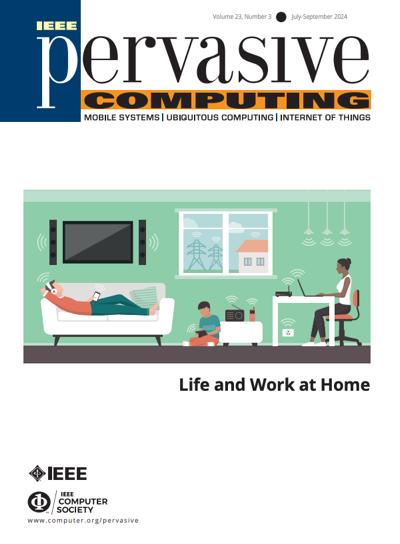
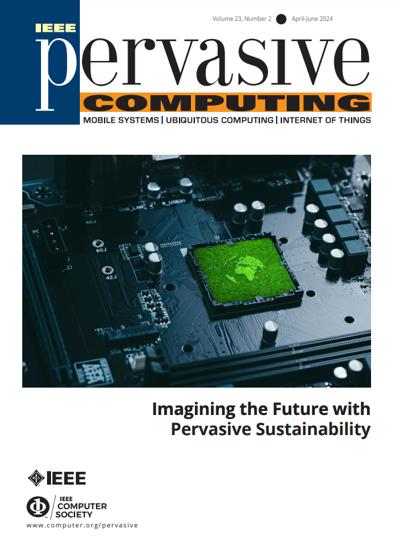
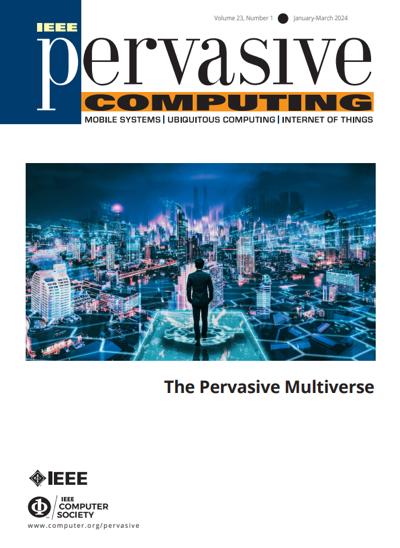
2023

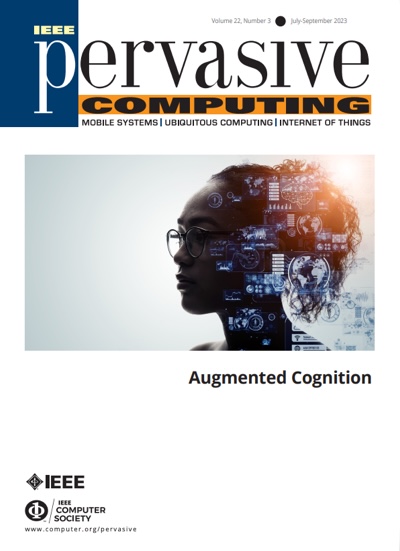
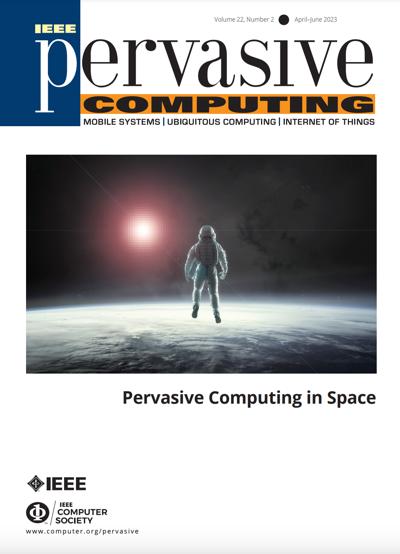
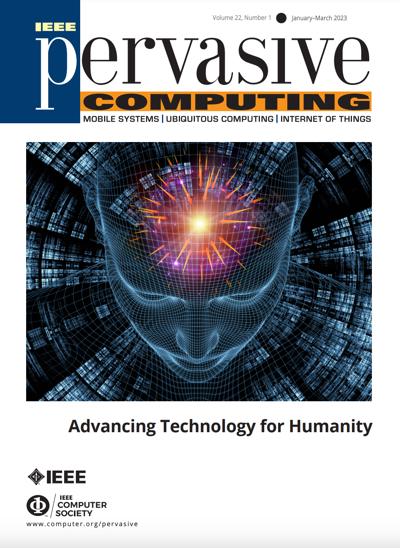
2022
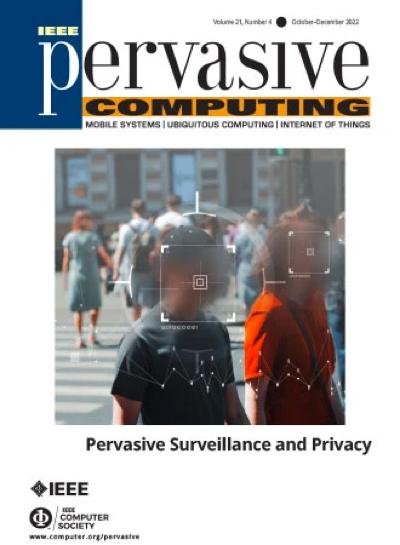
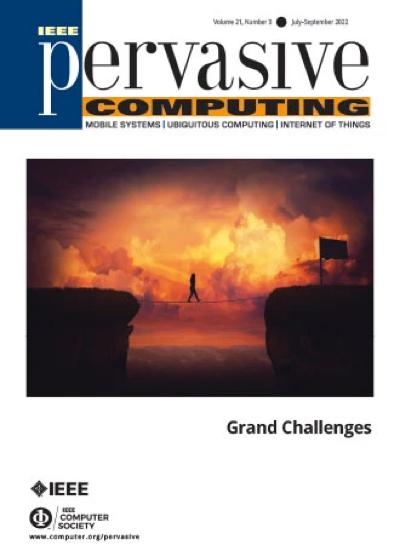
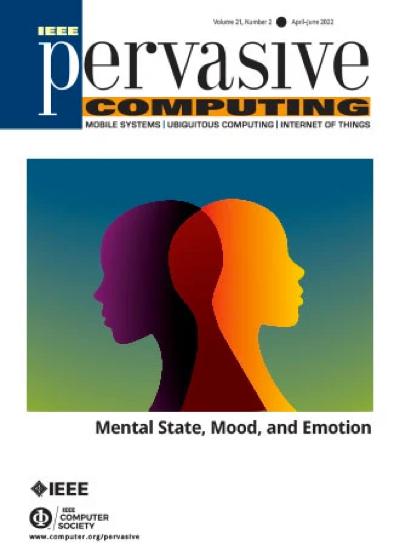

2021
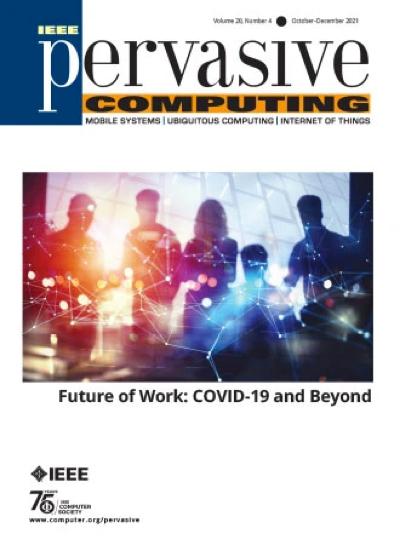

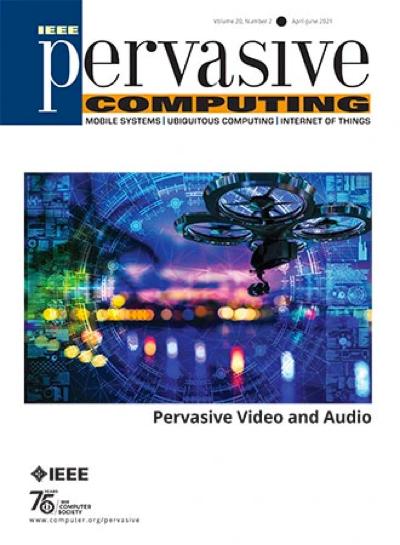

2020
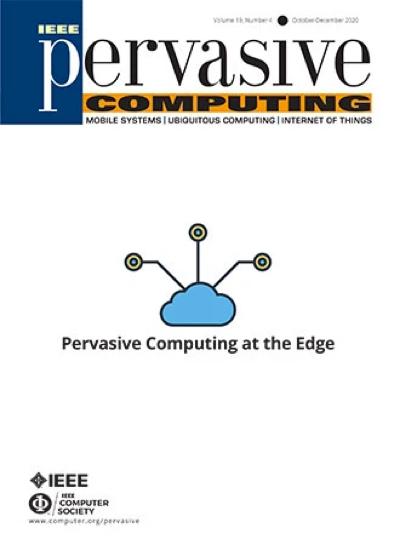
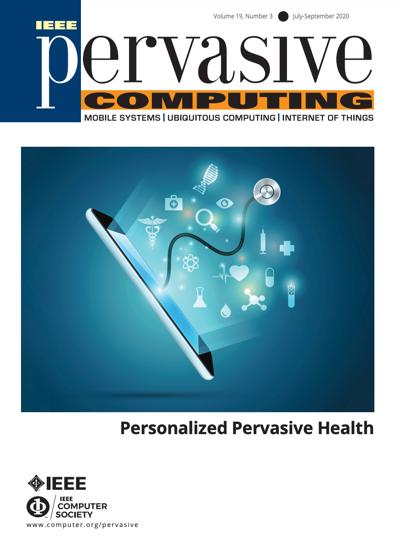
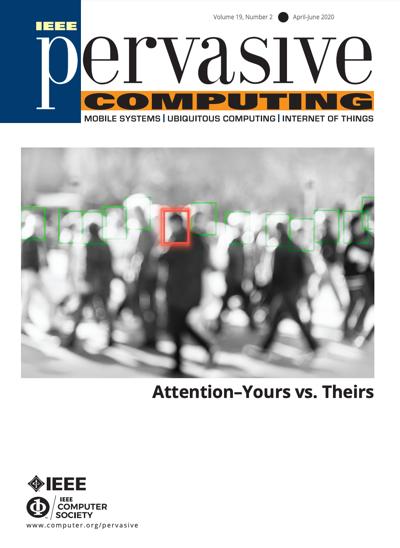
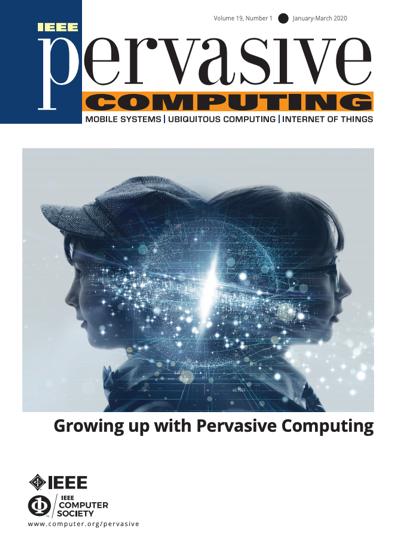
2019

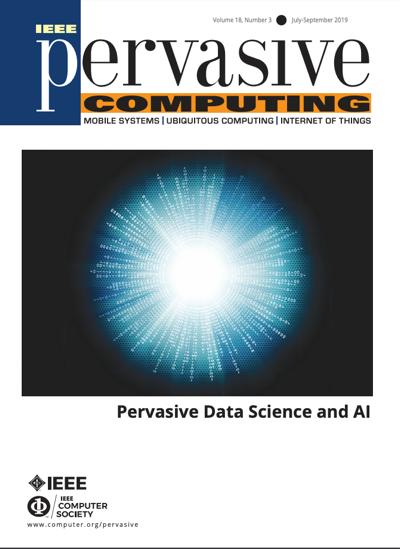
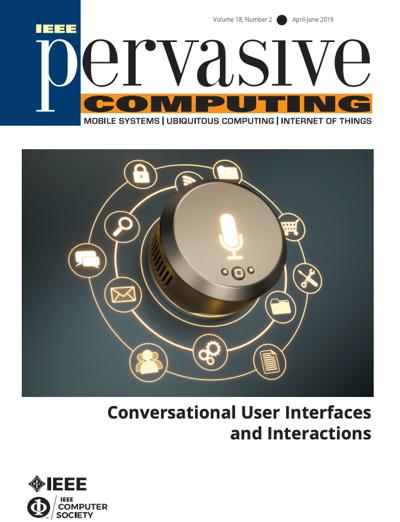
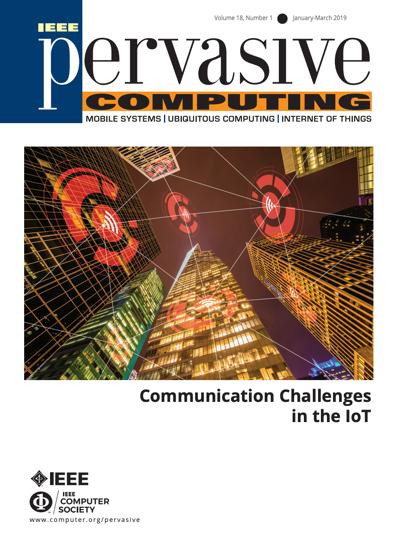
2018
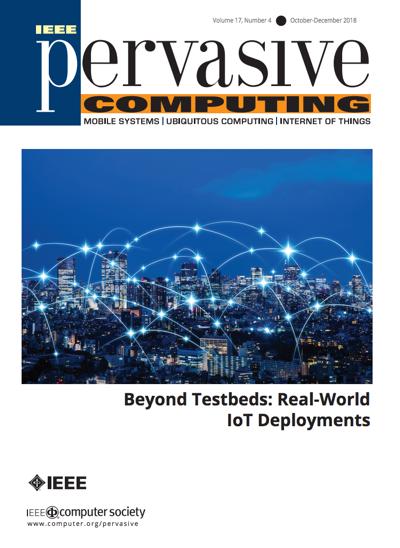
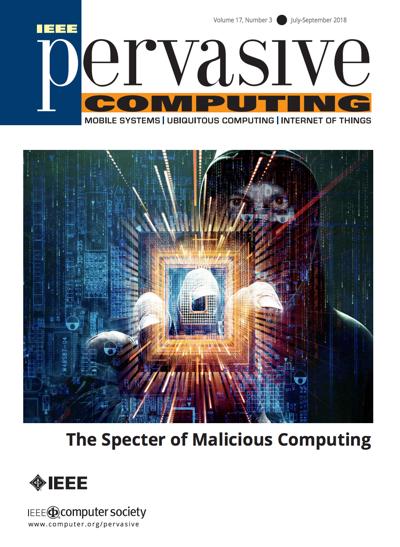
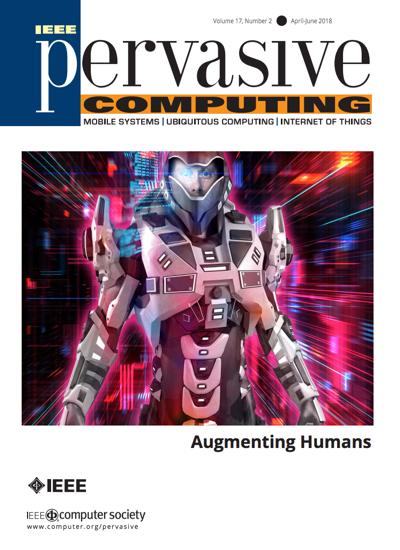
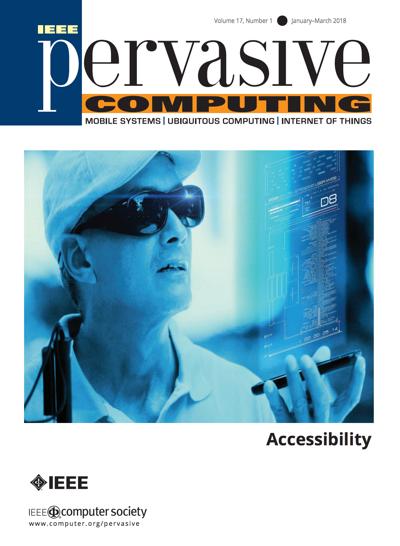
2017
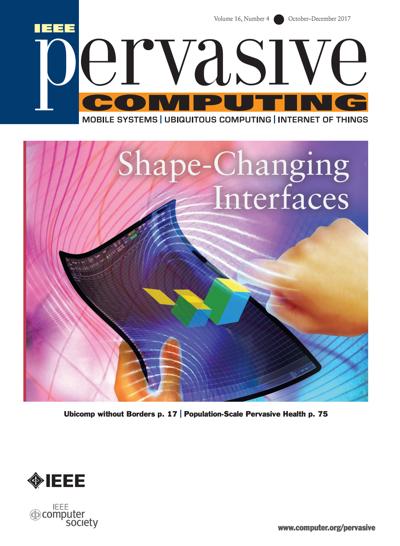
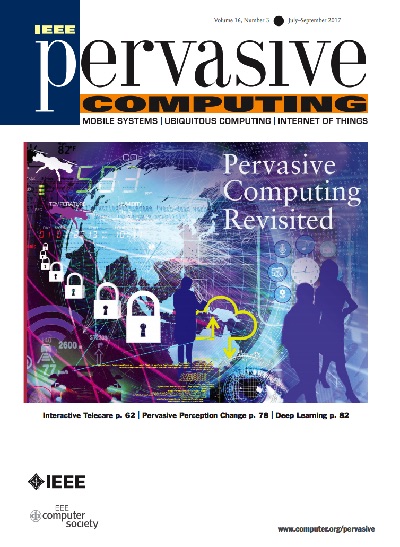
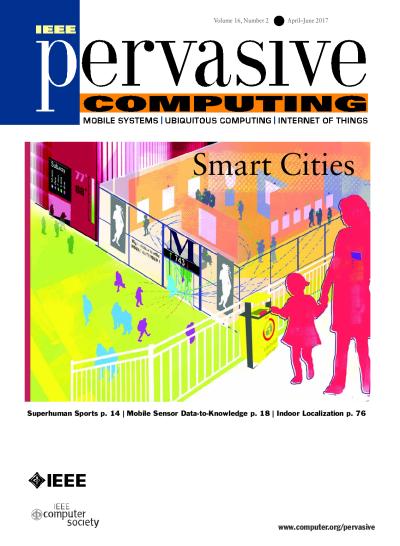
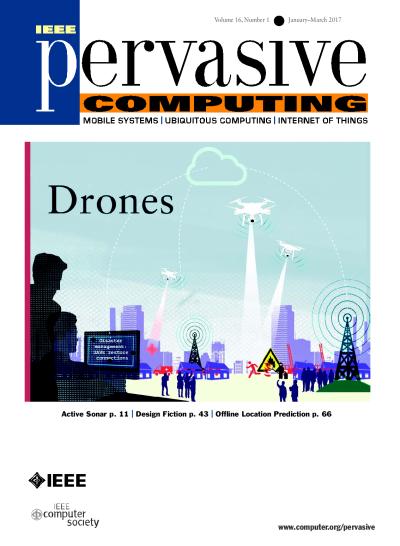
2016
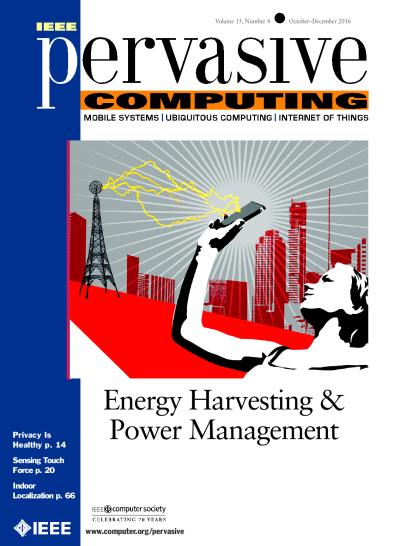
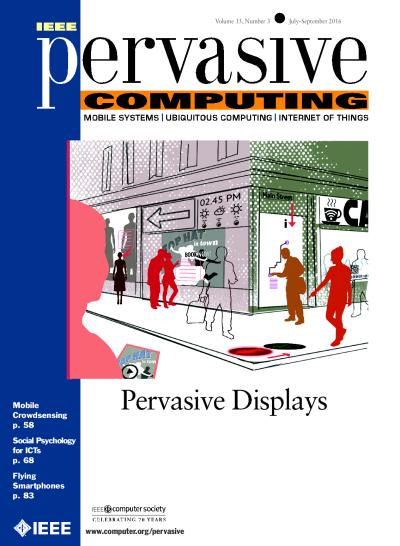

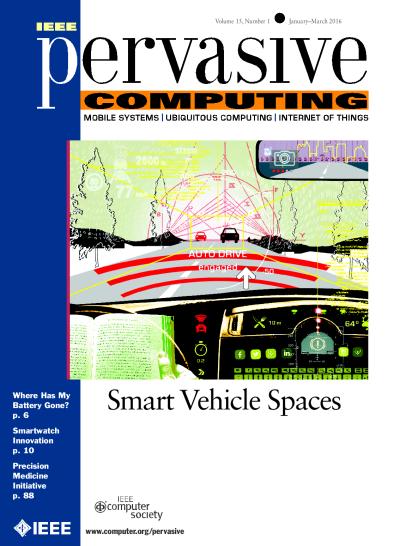
2015
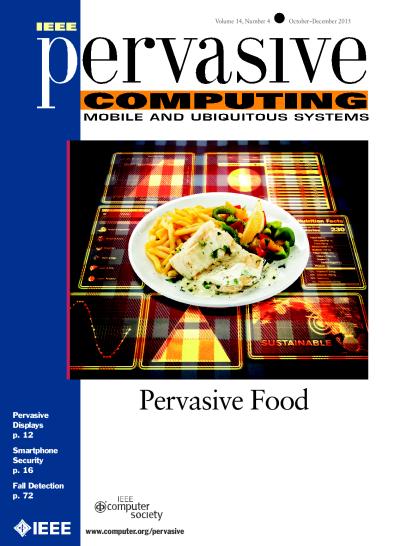

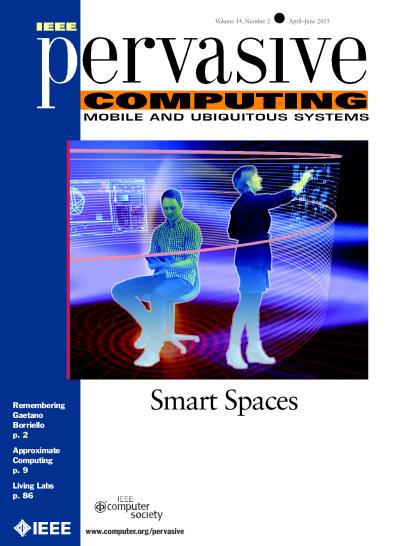
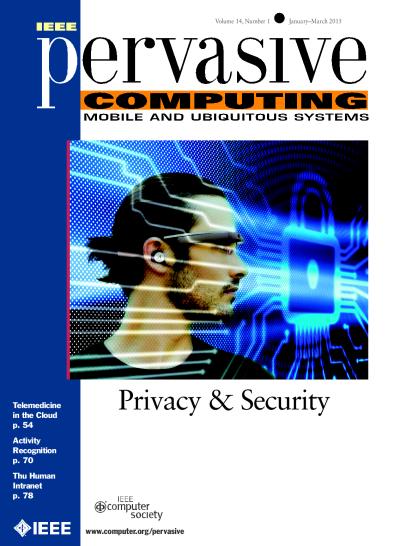
2014

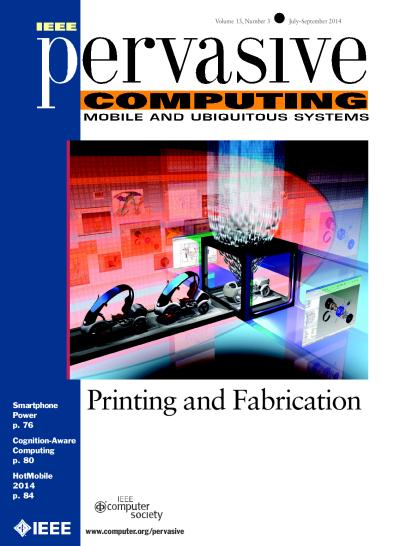
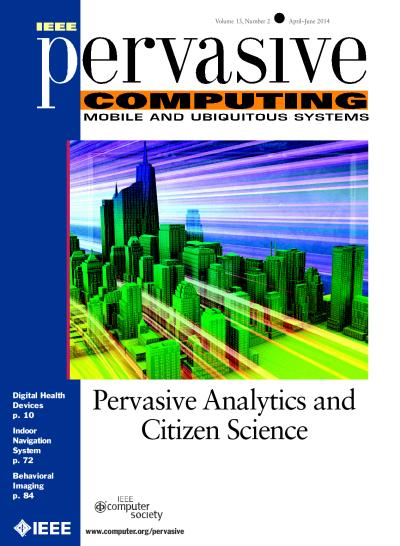
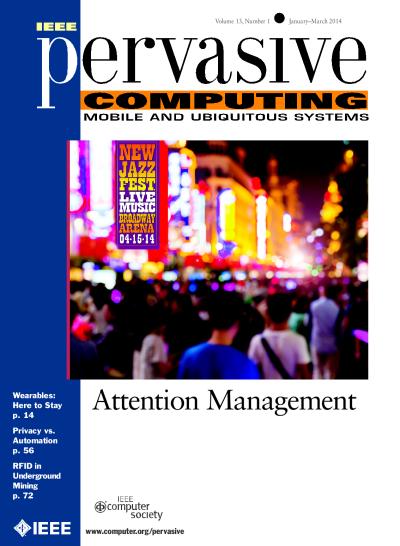
2013
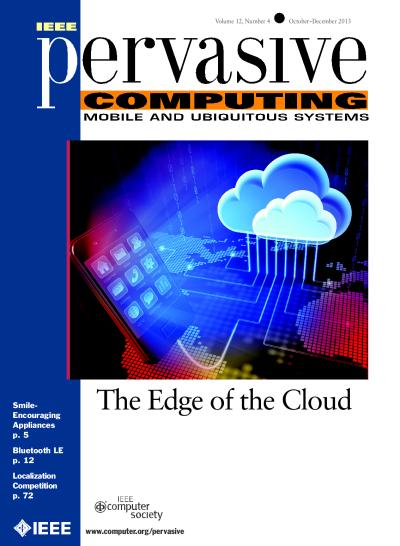
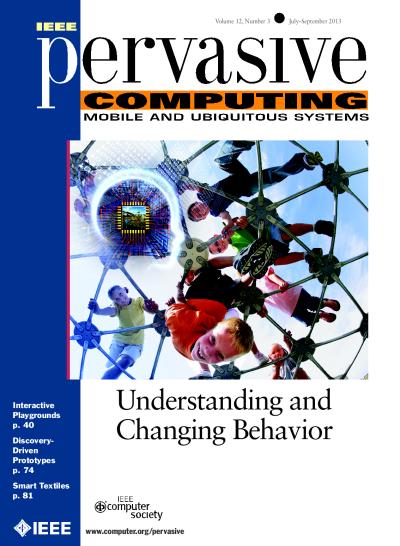
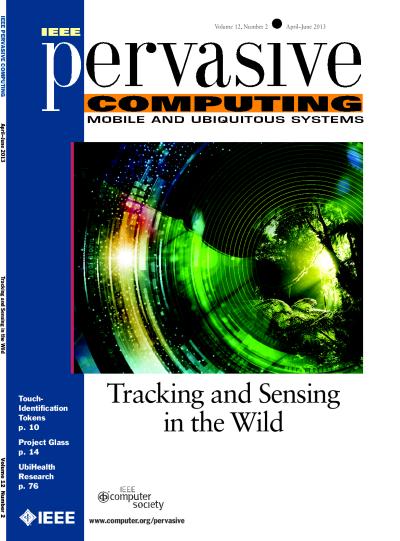
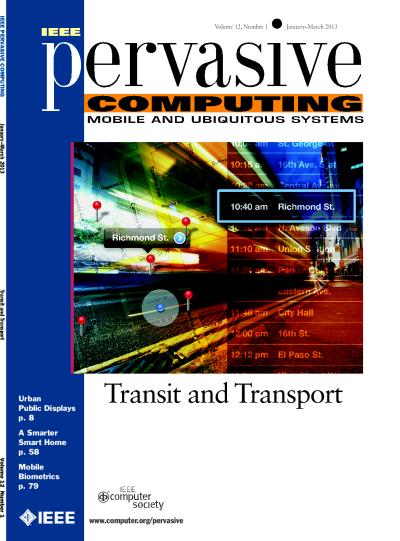
2012
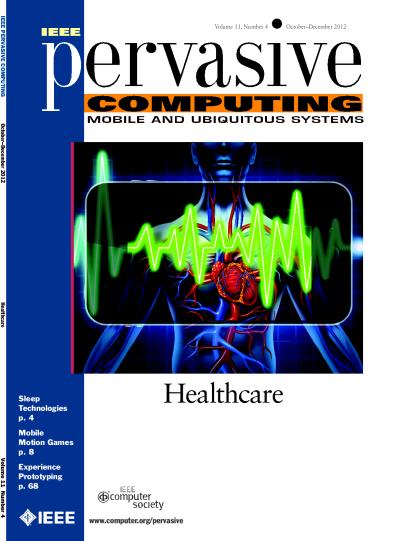
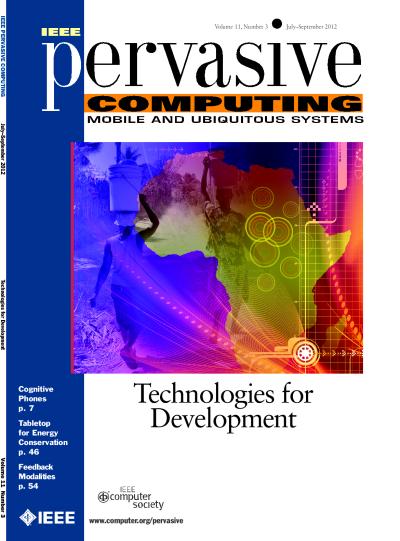
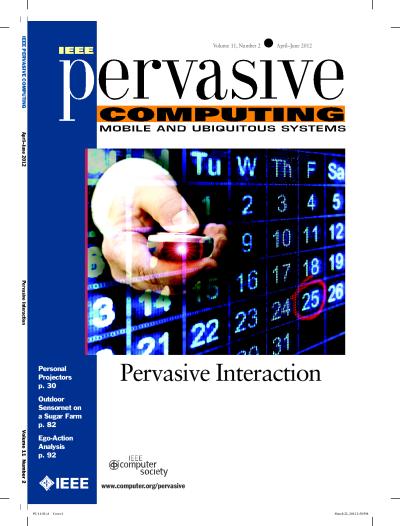
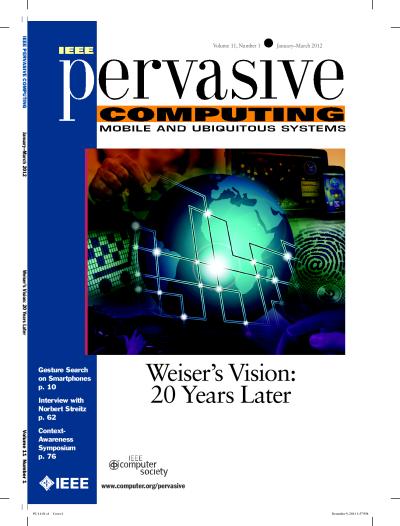
2011
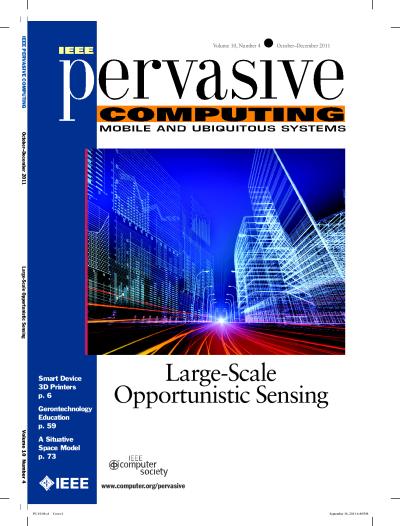
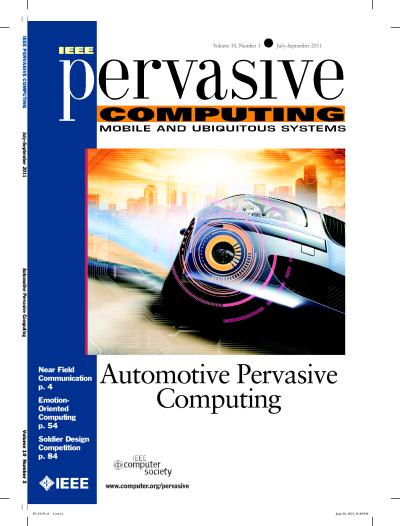
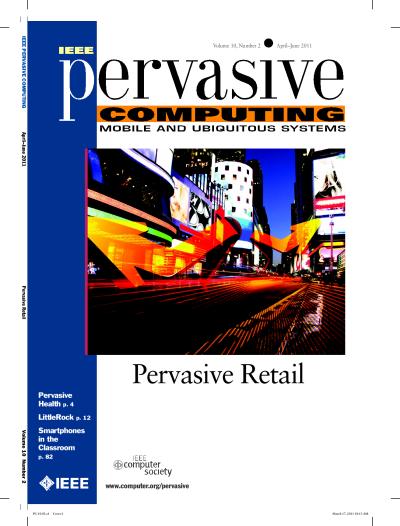

2010
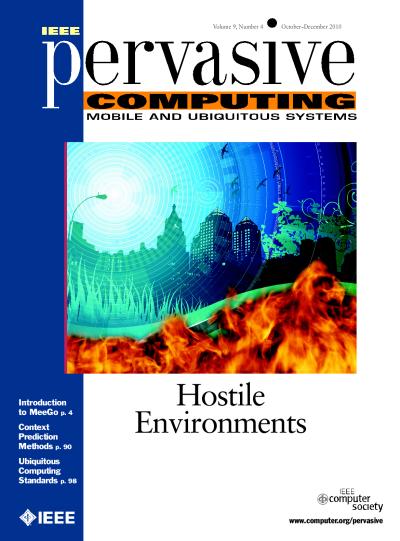
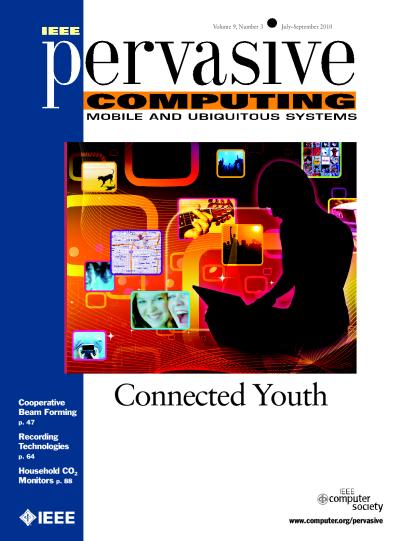
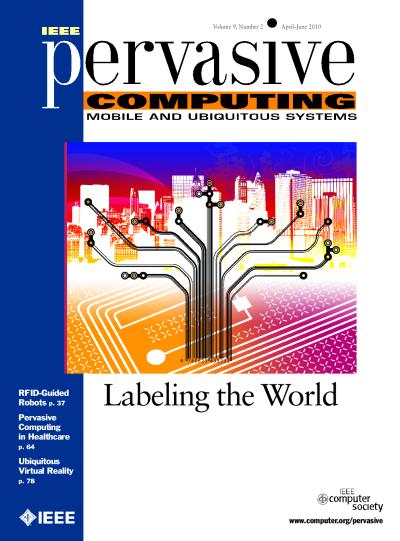
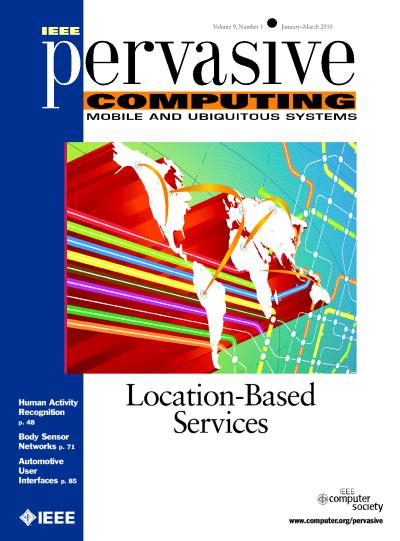
2009

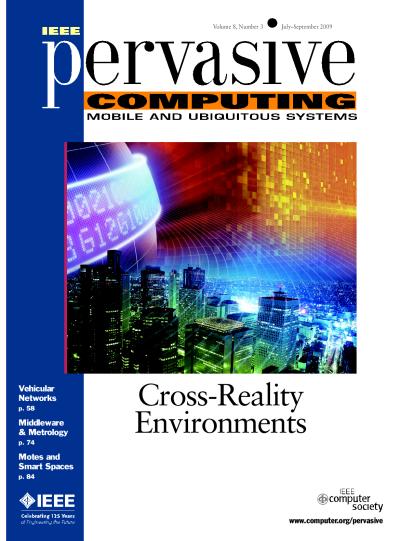
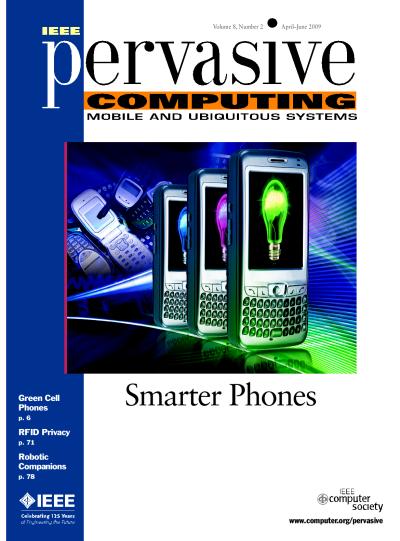
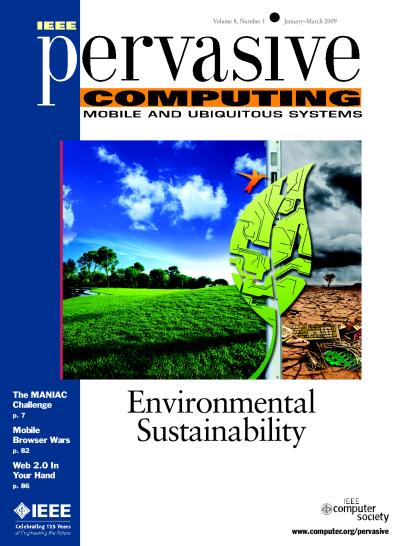
2008
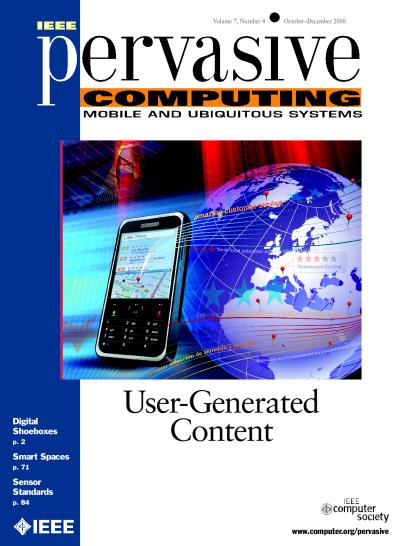
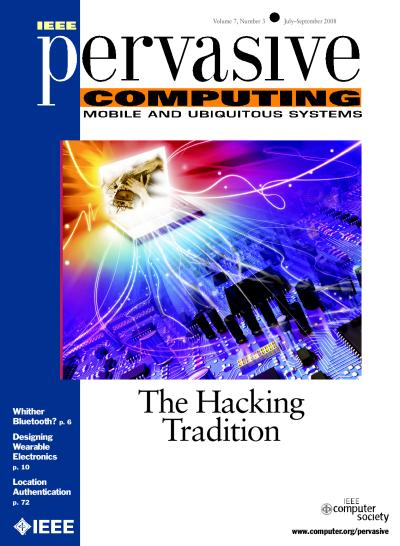
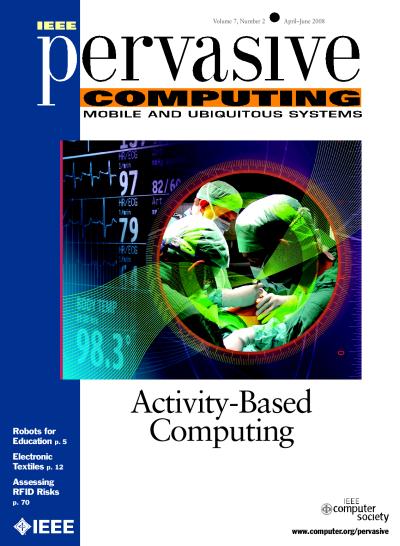
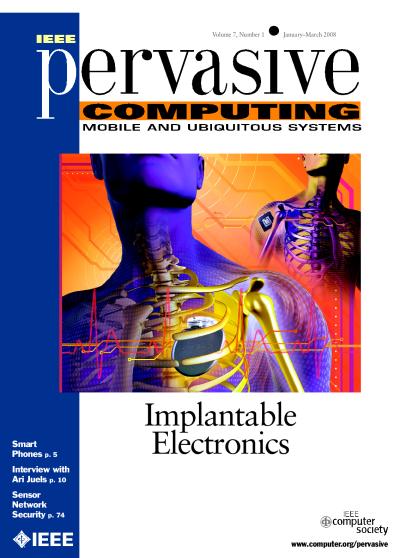
2007
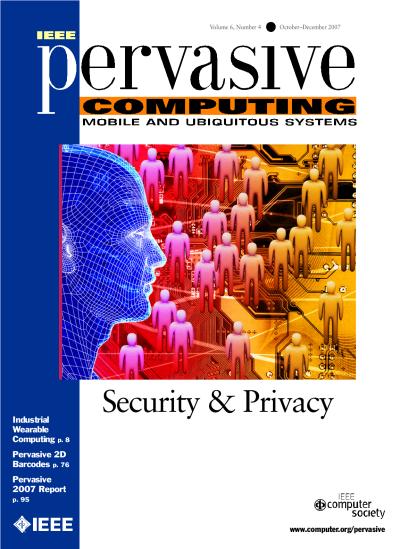
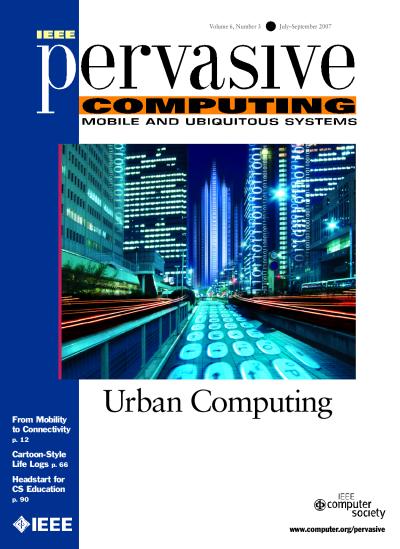
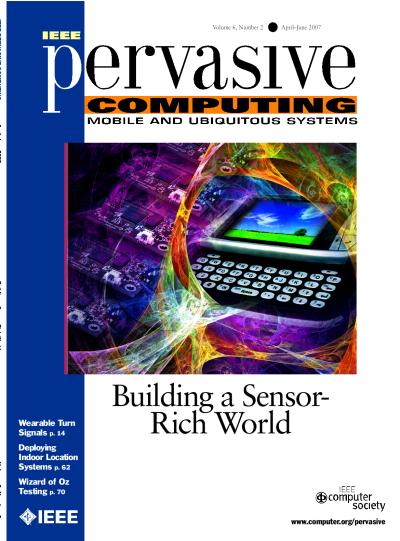
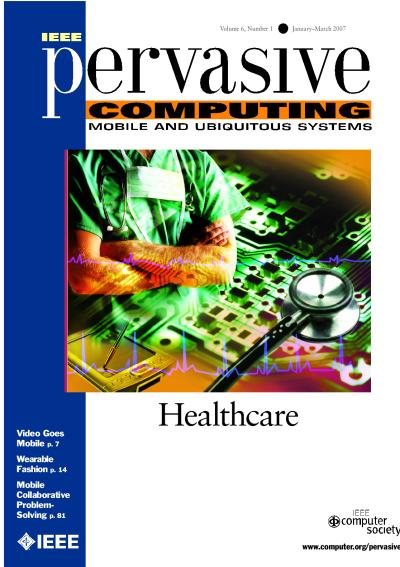
2006
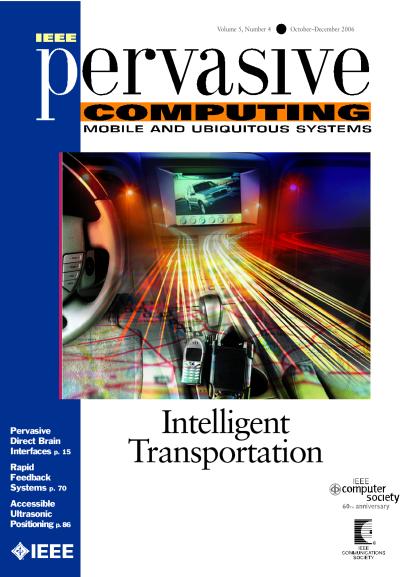
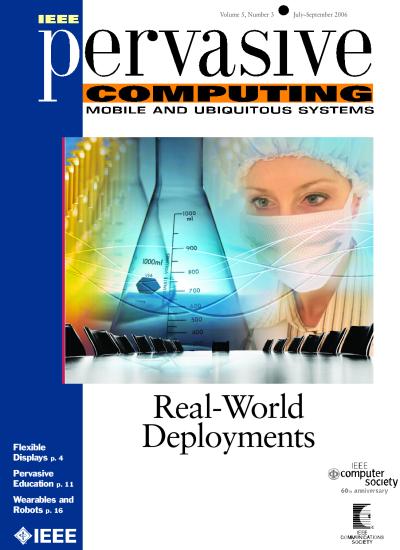
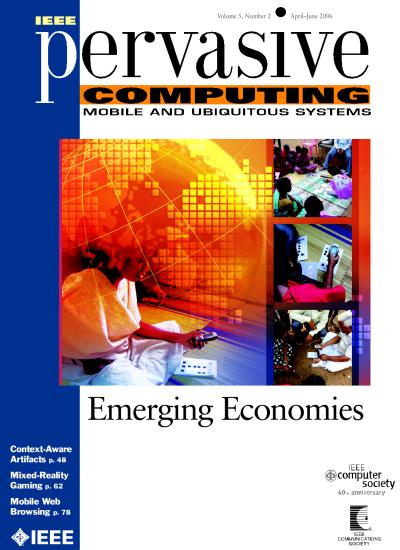
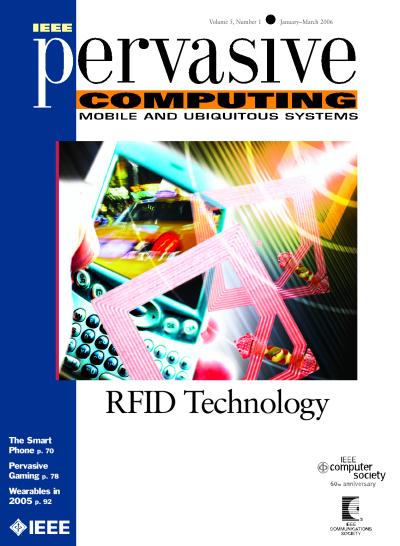
2005
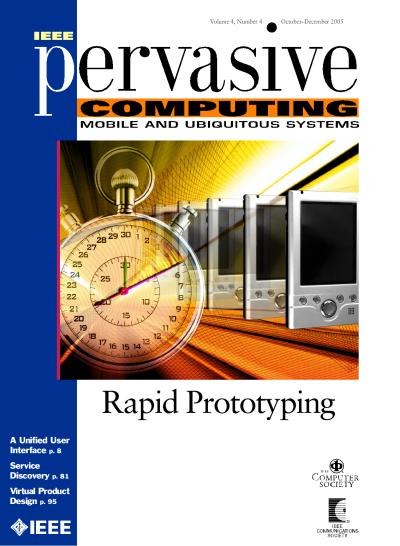
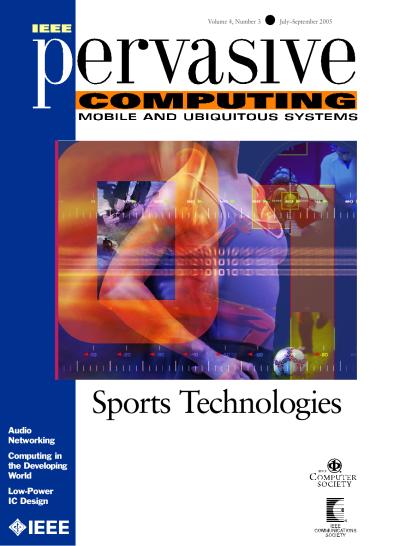
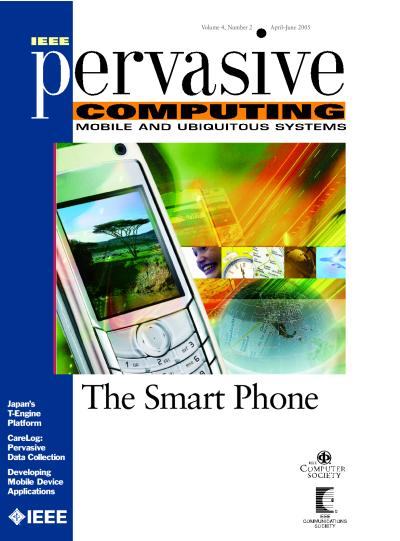

2004


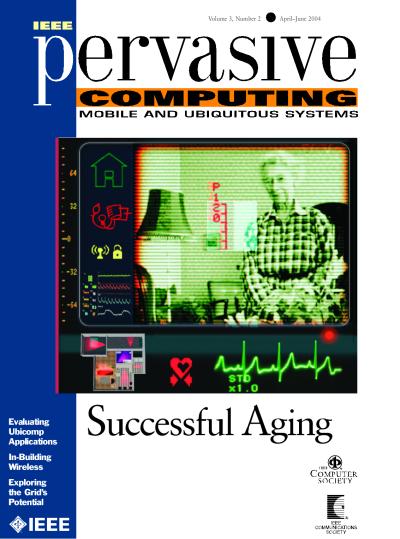
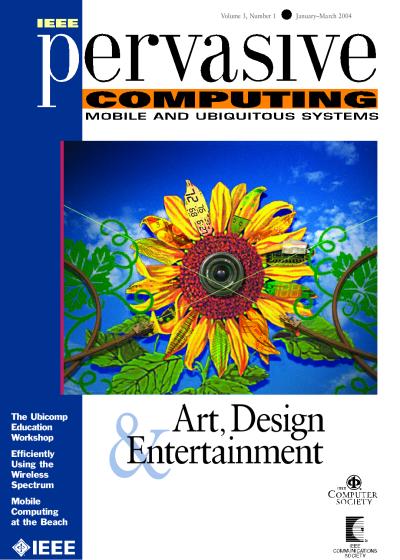
2003
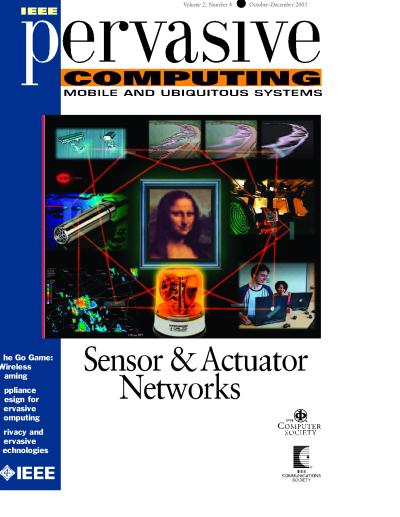
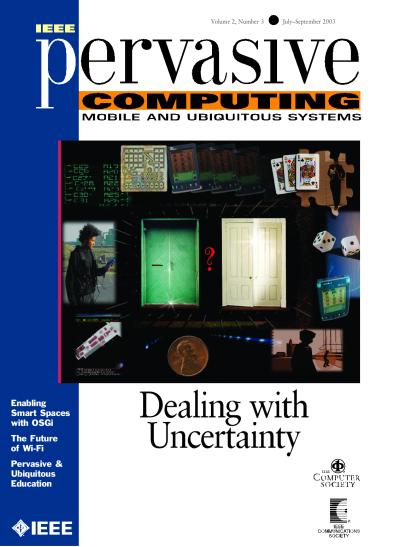
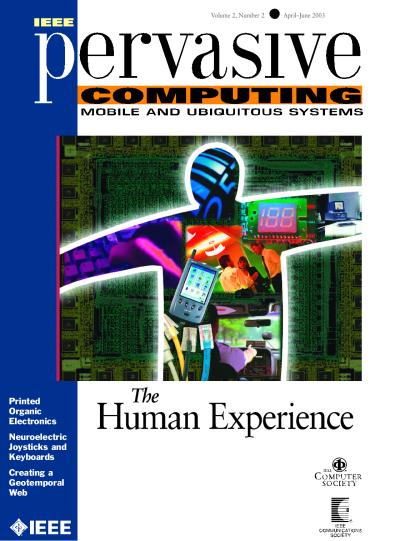
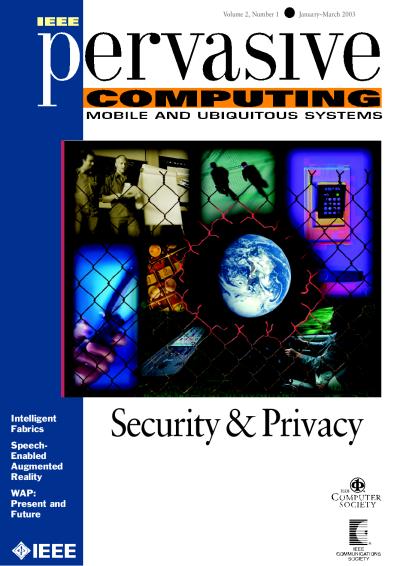
2002
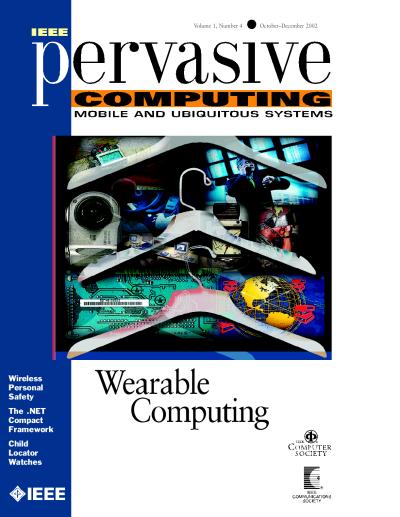
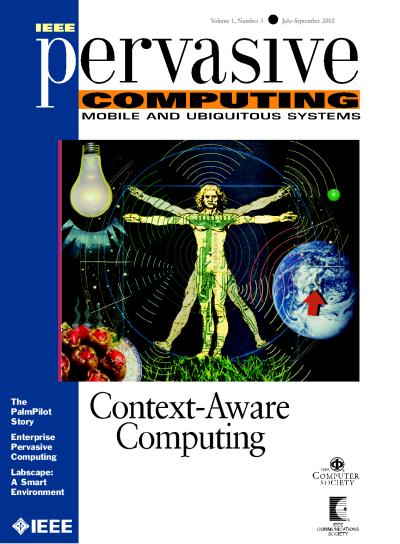
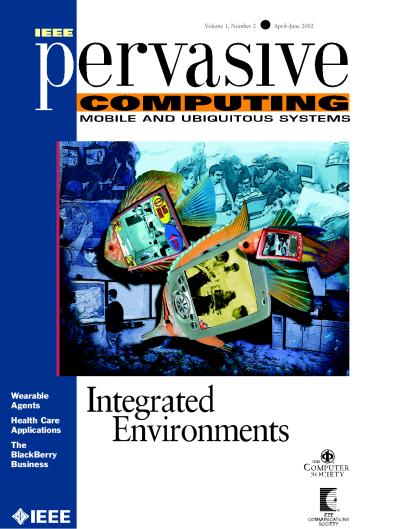

A searchable index (title, author, year) of all 1260 IEEE Pervasive Computing articles (excluding table of contents, front covers, commercials).
Common themes: pervasive; mobile; smart; wearable; ubiquitous; sensors; privacy;
A searchable index of 2997 IEEE Pervasive Computing authors. 497 authors published multiple articles.
| Nigel Davies | 44 articles |
| Maria Ebling | 40 articles |
| Albrecht Schmidt | 39 articles |
| Marc Langheinrich | 31 articles |
| Roy Want | 31 articles |
| Mary Baker | 31 articles |
| Oliver Amft | 24 articles |
| Joseph Paradiso | 21 articles |
| Andrew Kun | 20 articles |
| Thad Starner | 19 articles |
| Mahadev Satyanarayanan | 17 articles |
| Gregory Abowd | 16 articles |
| Florian Michahelles | 15 articles |
| Kristof Van Laerhoven | 15 articles |
| Paul Lukowicz | 15 articles |
| Jason Hong | 15 articles |
| Keith Farkas | 15 articles |
| Sarah Clinch | 14 articles |
| Jesús Favela | 13 articles |
| Justin Manweiler | 13 articles |
| Steve Hodges | 12 articles |
| Sumi Helal | 12 articles |
| Eyal de Lara | 12 articles |
| Gaetano Borriello | 12 articles |
| Gillian Hayes | 11 articles |
| Fahim Kawsar | 10 articles |
| Mike Hazas | 10 articles |
| Adrian Friday | 10 articles |
| Vassilis Kostakos | 9 articles |
| Jakob Bardram | 9 articles |
| Anind Dey | 9 articles |
| James Landay | 9 articles |
| Hans Gellersen | 9 articles |
| Scott Midkiff | 9 articles |
| Petteri Nurmi | 8 articles |
| Orit Shaer | 8 articles |
| Shwetak Patel | 8 articles |
| Carlo Ratti | 8 articles |
| Francesco Calabrese | 8 articles |
| Franklin Reynolds | 8 articles |
| Vince Stanford | 8 articles |
| Sasu Tarkoma | 7 articles |
| Huber Flores | 7 articles |
| Gabriela Marcu | 7 articles |
| Cecilia Mascolo | 7 articles |
| A. Brush | 7 articles |
| Khai Truong | 7 articles |
| Gerhard Tröster | 7 articles |
| Chandra Narayanaswami | 7 articles |
| Mark Corner | 7 articles |
| Monica Tentori | 6 articles |
| Daniele Quercia | 6 articles |
| Mirco Musolesi | 6 articles |
| Stephen Intille | 6 articles |
| Kai Kunze | 6 articles |
| Jeannie Albrecht | 6 articles |
| Daqing Zhang | 6 articles |
| Ramón Cáceres | 6 articles |
| Susanne Boll | 6 articles |
| Kent Lyons | 6 articles |
| Sunny Consolvo | 6 articles |
| Eric Paulos | 6 articles |
| Alois Ferscha | 6 articles |
| Tim Kindberg | 6 articles |
| Nicholas Lane | 5 articles |
| Florian Alt | 5 articles |
| Audrey Girouard | 5 articles |
| Andrew Campbell | 5 articles |
| Benjamin Tag | 5 articles |
| Simon Mayer | 5 articles |
| Andreas Bulling | 5 articles |
| Antti Oulasvirta | 5 articles |
| Yoshihiro Kawahara | 5 articles |
| Tom Martin | 5 articles |
| Daniel Siewiorek | 5 articles |
| Gerd Kortuem | 5 articles |
| Mateusz Mikusz | 5 articles |
| Deborah Estrin | 5 articles |
| Tanzeem Choudhury | 5 articles |
| George Roussos | 5 articles |
| Marcus Foth | 5 articles |
| Asim Smailagic | 5 articles |
| John Krumm | 5 articles |
| Mirjana Spasojevic | 5 articles |
| Elizabeth Mynatt | 5 articles |
| Jean Bacon | 5 articles |
| Adam Stone | 5 articles |
| Agustin Zuniga | 4 articles |
| Lakmal Meegahapola | 4 articles |
| Hristijan Gjoreski | 4 articles |
| Marios Constantinides | 4 articles |
| David Kotz | 4 articles |
| Andreas Riener | 4 articles |
| Jamie Ward | 4 articles |
| Daniel Roggen | 4 articles |
| Michael Beigl | 4 articles |
| Rafael Ballagas | 4 articles |
| Franco Zambonelli | 4 articles |
| Rajesh Krishna Balan | 4 articles |
| Kay Connelly | 4 articles |
| Alastair Beresford | 4 articles |
| Marco Gruteser | 4 articles |
| Nayeem Islam | 4 articles |
| Julie Kientz | 4 articles |
| Antonio Krüger | 4 articles |
| Brian Noble | 4 articles |
| Scott Carter | 4 articles |
| Zhiwen Yu | 4 articles |
| Hao-Hua Chu | 4 articles |
| Stephen Voida | 4 articles |
| Paolo Bellavista | 4 articles |
| Jeffrey Hightower | 4 articles |
| Blair MacIntyre | 4 articles |
| Anthony Joseph | 4 articles |
| Kenji Mase | 4 articles |
| Liviu Iftode | 4 articles |
| Armando Fox | 4 articles |
| Guerney Hunt | 4 articles |
| Naser Hossein Motlagh | 3 articles |
| Mohan Liyanage | 3 articles |
| Stefan Schneegass | 3 articles |
| Oliver Bates | 3 articles |
| Subigya Nepal | 3 articles |
| Andrew Vargo | 3 articles |
| Sajal Das | 3 articles |
| Tilman Dingler | 3 articles |
| Inseok Hwang | 3 articles |
| Klaus David | 3 articles |
| Veljko Pejovic | 3 articles |
| Gavin Doherty | 3 articles |
| Stephan Sigg | 3 articles |
| Pieter Simoens | 3 articles |
| Radu-Daniel Vatavu | 3 articles |
| Hsin-Liu Cindy Kao | 3 articles |
| Chulhong Min | 3 articles |
| Lucy Dunne | 3 articles |
| Elisabeth André | 3 articles |
| David Ramsay | 3 articles |
| Jennifer Healey | 3 articles |
| Nadya Peek | 3 articles |
| Mitja Lustrek | 3 articles |
| Aleksandar Matic | 3 articles |
| Bran Knowles | 3 articles |
| Joe Finney | 3 articles |
| Jennifer Mankoff | 3 articles |
| Eemil Lagerspetz | 3 articles |
| Juan Ye | 3 articles |
| Stefanie Mueller | 3 articles |
| Bryan Reimer | 3 articles |
| Pattie Maes | 3 articles |
| Geraldine Fitzpatrick | 3 articles |
| Jun Rekimoto | 3 articles |
| Kyle Rector | 3 articles |
| Jason Alexander | 3 articles |
| Matthew Reynolds | 3 articles |
| Lizbeth Escobedo | 3 articles |
| Hojung Cha | 3 articles |
| James Scott | 3 articles |
| Elise van den Hoven | 3 articles |
| Andrea Bellucci | 3 articles |
| K. Venkatesh Prasad | 3 articles |
| Mark Rouncefield | 3 articles |
| Janne Lindqvist | 3 articles |
| Mark Billinghurst | 3 articles |
| Thomas Pederson | 3 articles |
| Jie Liu | 3 articles |
| Andreas Komninos | 3 articles |
| Xingshe Zhou | 3 articles |
| John Canny | 3 articles |
| Bastian Pfleging | 3 articles |
| Geri Gay | 3 articles |
| Alex Pentland | 3 articles |
| Antonio Corradi | 3 articles |
| Tapan Parikh | 3 articles |
| Daniel Wagner | 3 articles |
| Dieter Schmalstieg | 3 articles |
| Trevor Pering | 3 articles |
| Diane Cook | 3 articles |
| Giusy Di Lorenzo | 3 articles |
| Woontack Woo | 3 articles |
| Marco Mamei | 3 articles |
| Seng Wai Loke | 3 articles |
| W. Keith Edwards | 3 articles |
| Bruce Thomas | 3 articles |
| Philip Valencia | 3 articles |
| Erdem Uçar | 3 articles |
| Thomas Zimmerman | 3 articles |
| John Heidemann | 3 articles |
| Anthony LaMarca | 3 articles |
| Tadayoshi Kohno | 3 articles |
| Frank Stajano | 3 articles |
| Giovanni Iachello | 3 articles |
| Alvis Cheuk Fong | 3 articles |
| Frédéric Thiesse | 3 articles |
| Laurianne McLaughlin | 3 articles |
| Jennifer Sheridan | 3 articles |
| Eleanor Toye | 3 articles |
| Richard Sharp | 3 articles |
| Anand Ranganathan | 3 articles |
| Roy Campbell | 3 articles |
| Mayowa Olapade | 2 articles |
| Zhigang Yin | 2 articles |
| Farooq Dar | 2 articles |
| Adeyinka Akintola | 2 articles |
| Franceli Cibrian | 2 articles |
| Martin Gjoreski | 2 articles |
| Shyamnath Gollakota | 2 articles |
| Luis Ignacio Lopera Gonzalez | 2 articles |
| Eva Hornecker | 2 articles |
| Timothy Pierson | 2 articles |
| Pedro Lopes | 2 articles |
| Pascal Knierim | 2 articles |
| Katayoun Farrahi | 2 articles |
| Philipp Wintersberger | 2 articles |
| Koichi Kise | 2 articles |
| Alfredo Perez | 2 articles |
| Hassan Ghasemzadeh | 2 articles |
| Ella Peltonen | 2 articles |
| Ariel Ekblaw | 2 articles |
| Juliana Cherston | 2 articles |
| Irmandy Wicaksono | 2 articles |
| James Crowley | 2 articles |
| Joëlle Coutaz | 2 articles |
| Claudio Pinhanez | 2 articles |
| Niels van Berkel | 2 articles |
| Christoph Anderson | 2 articles |
| Akane Sano | 2 articles |
| Thomas Vaessen | 2 articles |
| Kristina Yordanova | 2 articles |
| Benjamin Cowan | 2 articles |
| Kevin Doherty | 2 articles |
| Per Bækgaard | 2 articles |
| Florian Schaub | 2 articles |
| Junehwa Song | 2 articles |
| Luís Castro | 2 articles |
| Tobias Langlotz | 2 articles |
| Judy Kay | 2 articles |
| Yvonne Rogers | 2 articles |
| Andrea Ferlini | 2 articles |
| Rahul Majethia | 2 articles |
| Julien Epps | 2 articles |
| Ke Zhou | 2 articles |
| Sagar Joglekar | 2 articles |
| Jorge Gonçalves | 2 articles |
| Jung Wook Park | 2 articles |
| Rosa Arriaga | 2 articles |
| Daniel Epstein | 2 articles |
| Nuria Oliver | 2 articles |
| Shoya Ishimaru | 2 articles |
| Shayan Mirjafari | 2 articles |
| Gonzalo Martínez | 2 articles |
| Pino Audia | 2 articles |
| Aaron Striegel | 2 articles |
| Enrico Rukzio | 2 articles |
| Jina Huh-Yoo | 2 articles |
| Lorraine Buis | 2 articles |
| Victor Charpenay | 2 articles |
| Thomas Eiszler | 2 articles |
| Haithem Turki | 2 articles |
| Ziqiang Feng | 2 articles |
| Padmanabhan Pillai | 2 articles |
| Niels Henze | 2 articles |
| Katrin Wolf | 2 articles |
| Andrew "bunnie" Huang | 2 articles |
| Anne Roudaut | 2 articles |
| Panos Markopoulos | 2 articles |
| Koji Yatani | 2 articles |
| Hiroshi Horii | 2 articles |
| Nicholas Chen | 2 articles |
| Simon Dobson | 2 articles |
| Andrey Somov | 2 articles |
| Youngki Lee | 2 articles |
| Arne Bröring | 2 articles |
| Tao Gu | 2 articles |
| Jian Lu | 2 articles |
| Federica Paganelli | 2 articles |
| Stefan Schmid | 2 articles |
| Akhil Mathur | 2 articles |
| Eun Kyoung Choe | 2 articles |
| Bongshin Lee | 2 articles |
| Sarah Spiekermann | 2 articles |
| Rob Van Kranenburg | 2 articles |
| Sean Follmer | 2 articles |
| Heather Patterson | 2 articles |
| Ville Mäkelä | 2 articles |
| Joshua Smith | 2 articles |
| James Rehg | 2 articles |
| Mani Srivastava | 2 articles |
| Suining He | 2 articles |
| S.-H. Gary Chan | 2 articles |
| Yasue Kishino | 2 articles |
| Yutaka Yanagisawa | 2 articles |
| Daniel Gatica-Perez | 2 articles |
| Katja Schechtner | 2 articles |
| Alexander Ilic | 2 articles |
| Chris Nugent | 2 articles |
| Markus Funk | 2 articles |
| Matthew Kay | 2 articles |
| Bradford Campbell | 2 articles |
| Prabal Dutta | 2 articles |
| Timo Ojala | 2 articles |
| Nemanja Memarovic | 2 articles |
| Ivan Elhart | 2 articles |
| Yungeun Kim | 2 articles |
| Yohan Chon | 2 articles |
| Giulio Jacucci | 2 articles |
| Brandon Amos | 2 articles |
| Margaret Morris | 2 articles |
| Guodong Feng | 2 articles |
| Xuemei Guo | 2 articles |
| Guoli Wang | 2 articles |
| Geoff Ward | 2 articles |
| Christos Efstratiou | 2 articles |
| Cristian Borcea | 2 articles |
| Ignacio Aedo | 2 articles |
| Paloma Díaz | 2 articles |
| Jingyuan Cheng | 2 articles |
| Florian Pinel | 2 articles |
| Simon Kozina | 2 articles |
| Matjaz Gams | 2 articles |
| Kiran Rachuri | 2 articles |
| Kiryong Ha | 2 articles |
| Miodrag Bolic | 2 articles |
| Yuanchun Shi | 2 articles |
| Andry Rakotonirainy | 2 articles |
| Corey Graves | 2 articles |
| Christian Weichel | 2 articles |
| Jan Rabaey | 2 articles |
| Corina Sas | 2 articles |
| Chris Greenhalgh | 2 articles |
| Aaron Quigley | 2 articles |
| Nan-Wei Gong | 2 articles |
| Björn Hartmann | 2 articles |
| Tim van Kasteren | 2 articles |
| Ben Kröse | 2 articles |
| Melody Moore Jackson | 2 articles |
| Alice Angus | 2 articles |
| Giles Lane | 2 articles |
| Chuang-Wen You | 2 articles |
| Ming-Syan Chen | 2 articles |
| Wilko Heuten | 2 articles |
| Stefan Schneegaß | 2 articles |
| Bill Schilit | 2 articles |
| Jianliang Xu | 2 articles |
| Filip De Turck | 2 articles |
| Bart Dhoedt | 2 articles |
| John Pollak | 2 articles |
| Carl Fischer | 2 articles |
| Yuichi Nakamura | 2 articles |
| Santi Phithakkitnukoon | 2 articles |
| Michael O'Grady | 2 articles |
| Gregory O'Hare | 2 articles |
| Dermot Diamond | 2 articles |
| Vlad Stirbu | 2 articles |
| Philip Tresadern | 2 articles |
| Brian Ferris | 2 articles |
| Sidhant Gupta | 2 articles |
| David Haniff | 2 articles |
| Daniel Ashbrook | 2 articles |
| Alireza Sahami Shirazi | 2 articles |
| Rohit Chaudhri | 2 articles |
| Eiman Kanjo | 2 articles |
| Lakshminarayanan Subramanian | 2 articles |
| Mathew Laibowitz | 2 articles |
| Alessandro Mulloni | 2 articles |
| Keng Tan | 2 articles |
| Hiroko Kato | 2 articles |
| Peter Corke | 2 articles |
| Jialiu Lin | 2 articles |
| Yang Li | 2 articles |
| Mohan Trivedi | 2 articles |
| Grant Jacoby | 2 articles |
| Elmer Lupton | 2 articles |
| Roderick Hinman | 2 articles |
| Steven Leeb | 2 articles |
| Michael Lawo | 2 articles |
| Otthein Herzog | 2 articles |
| Joshua Lifton | 2 articles |
| José Santa | 2 articles |
| Antonio Fernandez Gómez-Skarmeta | 2 articles |
| Cristiano di Flora | 2 articles |
| Joseph Kaye | 2 articles |
| Derek Reilly | 2 articles |
| Ali Mazalek | 2 articles |
| William Griswold | 2 articles |
| Michael Massimi | 2 articles |
| David Dearman | 2 articles |
| Salvatore Sorce | 2 articles |
| Alessandro Genco | 2 articles |
| Rahul Sukthankar | 2 articles |
| Alessio Malizia | 2 articles |
| Charles Kemp | 2 articles |
| Almudena Díaz | 2 articles |
| Pedro Merino | 2 articles |
| F. Javier Rivas | 2 articles |
| Jonathan Reades | 2 articles |
| Rahul Sarpeshkar | 2 articles |
| Graeme Stevenson | 2 articles |
| Paddy Nixon | 2 articles |
| Ingrid Mulder | 2 articles |
| Mark Newman | 2 articles |
| Alejandro Cadenas | 2 articles |
| Antonio Sánchez-Esguevillas | 2 articles |
| Javier Aguiar | 2 articles |
| Belén Carro | 2 articles |
| Donald Patterson | 2 articles |
| Larry Rudolph | 2 articles |
| Beverly Harrison | 2 articles |
| Maribeth Back | 2 articles |
| J. Antonio García-Macías | 2 articles |
| Vincent Stanford | 2 articles |
| Luiz DaSilva | 2 articles |
| Allen MacKenzie | 2 articles |
| Tatsuya Yamazaki | 2 articles |
| Tim Wark | 2 articles |
| Dave Swain | 2 articles |
| Christopher Crossman | 2 articles |
| Greg Bishop-Hurley | 2 articles |
| Cliff Randell | 2 articles |
| Allison Woodruff | 2 articles |
| Michael Thompson | 2 articles |
| Elgar Fleisch | 2 articles |
| Paul Dourish | 2 articles |
| Karen Martin | 2 articles |
| Maria da Graça Campos Pimentel | 2 articles |
| Renan Cattelan | 2 articles |
| Fabien Girardin | 2 articles |
| Josep Blat | 2 articles |
| Brygg Ullmer | 2 articles |
| Nishkam Ravi | 2 articles |
| Christian Kray | 2 articles |
| Giovanna Di Marzo Serugendo | 2 articles |
| G. Thyagaraju | 2 articles |
| Umakanth Kulkarni | 2 articles |
| Anil Yardi | 2 articles |
| Laurence Kenney | 2 articles |
| Adrian David Cheok | 2 articles |
| Dirk Hähnel | 2 articles |
| Bernt Schiele | 2 articles |
| Paolo Bonato | 2 articles |
| Olivier Chevalerias | 2 articles |
| Randy Carroll | 2 articles |
| Tristan Henderson | 2 articles |
| Siu Cheung Hui | 2 articles |
| Magdalena Balazinska | 2 articles |
| Mandayam Raghunath | 2 articles |
| Shin'ichi Konomi | 2 articles |
| Scott Mainwaring | 2 articles |
| Samuel Madden | 2 articles |
| Feng Zhao | 2 articles |
| Phillip Gibbons | 2 articles |
| Suman Nath | 2 articles |
| Víctor González | 2 articles |
| Ken Anderson | 2 articles |
| Phoebe Sengers | 2 articles |
| Thomas Riisgaard Hansen | 2 articles |
| Danna Voth | 2 articles |
| Kasim Rehman | 2 articles |
| Greg Goth | 2 articles |
| Jonathan Davies | 2 articles |
| Panu Korpipää | 2 articles |
| Esko-Juhani Malm | 2 articles |
| Juha Kela | 2 articles |
| Jani Mäntyjärvi | 2 articles |
| Chung-Yau Chin | 2 articles |
| Xiaohang Wang | 2 articles |
| Oliver Storz | 2 articles |
| David Geer | 2 articles |
| Choonhwa Lee | 2 articles |
| Kalle Jegers | 2 articles |
| Mikael Wiberg | 2 articles |
| Maribeth Gandy | 2 articles |
| Alan Blackwell | 2 articles |
| Jennifer Ann Rode | 2 articles |
| Mark Stringer | 2 articles |
| Marc Böhlen | 2 articles |
| Ed Chi | 2 articles |
| Anil Madhavapeddy | 2 articles |
| David Scott | 2 articles |
| Celeste Campo | 2 articles |
| Manuel Román | 2 articles |
| Matthai Philipose | 2 articles |
| Vijay Kumar | 2 articles |
| Daniela Rus | 2 articles |
| Kenneth Fishkin | 2 articles |
| Dieter Fox | 2 articles |
| Vinny Cahill | 2 articles |
| Klara Nahrstedt | 2 articles |
| David Ross | 2 articles |
| Peter Resch | 2 articles |
| Richard Beckwith | 2 articles |
| Steve Benford | 2 articles |
| Justin Mazzola Paluska | 2 articles |
| Meg McGinity | 2 articles |
| Shani Murray | 2 articles |
| Richard Muntz | 2 articles |
| Hans-Werner Gellersen | 2 articles |
| Ngoc Thi Nguyen | 1 article |
| Marko Radeta | 1 article |
| Arturo Morales-Tellez | 1 article |
A searchable selection of 0 interesting, educative, thought-provoking, or contraversial quotes.
Here you will find word clouds for each decade. Word clouds are generated from terms used in titles of articles.
Contact
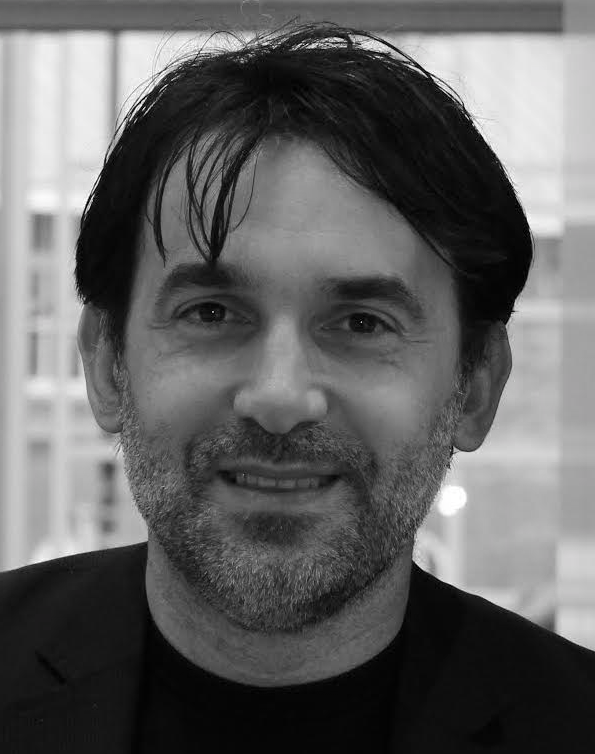 | This site is curated and maintained by Zeljko Obrenovic (@zeljko_obren). Contact him for any questions or suggestions. |